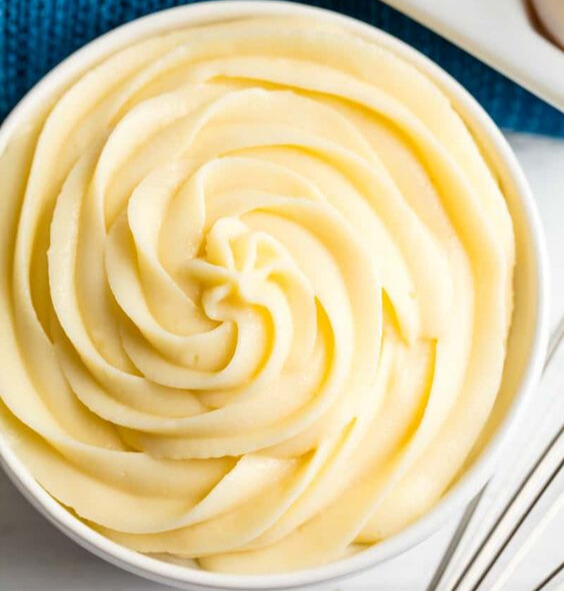Step 1: Infuse the Milk with Vanilla
- Pour the whole milk into a medium saucepan and add the seeds from the vanilla bean along with the split bean pod. Heat the mixture over medium heat until it just begins to simmer. If using vanilla extract, hold off and add it at the end.
- Remove from heat and allow the vanilla bean to steep in the warm milk for about 5 minutes to intensify the flavor.
Step 2: Prepare the Egg Mixture
- In a medium bowl, whisk together the egg yolks, granulated sugar, cornstarch, and a pinch of salt until smooth and pale. The cornstarch will help thicken the cream and give it a silky consistency.
Step 3: Temper the Eggs
- Slowly pour about half of the warm milk into the egg mixture while whisking constantly. This step gently warms the eggs, preventing them from scrambling.
- Once the egg mixture is warmed, pour it back into the saucepan with the remaining milk.
Step 4: Thicken the Pastry Cream
- Return the saucepan to medium heat and continue whisking. The mixture will start to thicken after a few minutes. Keep whisking to ensure a smooth, lump-free cream.
- Cook the pastry cream for another 1-2 minutes until it reaches the consistency of a thick pudding.
Step 5: Add Butter and Vanilla
- Remove the pastry cream from heat and whisk in the butter. This step adds a rich, silky finish to the cream. If you are using vanilla extract, stir it in now.
Step 6: Cool the Pastry Cream
- Transfer the pastry cream to a clean bowl. Press a piece of plastic wrap directly onto the surface of the cream to prevent a skin from forming.
- Let it cool at room temperature for 30 minutes, then refrigerate for at least 2 hours until fully chilled.
Step 7: Use as Desired
- Once chilled, the pastry cream can be piped or spooned into pastries, tarts, cakes, or used as a layer in trifles. Stir it gently before use to restore its smoothness.
Tips for Success:
- Constant whisking: This is the key to avoiding lumps. Keep whisking while the pastry cream is cooking to achieve a smooth texture.
- Strain if needed: If you do end up with small lumps, you can pass the pastry cream through a fine-mesh sieve to remove them.
- Use a double boiler: For extra caution, especially for beginners, you can cook the pastry cream over a double boiler to avoid curdling the eggs.
Variations:
- Chocolate Pastry Cream: Stir in 4 oz of melted dark chocolate at the end of the cooking process for a rich chocolate version.
- Citrus Pastry Cream: Add lemon or orange zest to the milk while it’s heating for a bright and tangy flavor.
- Coffee Pastry Cream: Dissolve 2 tsp instant espresso powder in the milk to create a coffee-flavored pastry cream.
Storing and Serving:
- Storage: Store pastry cream in the refrigerator for up to 3 days in an airtight container. Be sure to stir it before using, as it may firm up while chilling.
- Freezing: Unfortunately, pastry cream doesn’t freeze well, as the texture changes upon thawing.
Frequently Asked Questions
Q: Why did my pastry cream turn lumpy?
A: Lumps are usually caused by improper whisking or cooking the cream over too high heat. To prevent lumps, whisk constantly, and if lumps form, strain the cream before cooling.
Q: How long can I store pastry cream?
A: Pastry cream can be stored in the refrigerator for up to 3 days. After that, it may lose its smooth consistency.
Q: Can I make pastry cream without cornstarch?
A: Cornstarch is essential for thickening, but you can substitute it with flour if needed. Use the same amount, but expect a slightly different texture.
This Perfect Pastry Cream recipe is a foolproof way to achieve that rich, luxurious custard that forms the base of so many incredible desserts. Whether you’re filling a tart, éclair, or layering in cakes, this recipe will become a staple in your baking repertoire.
